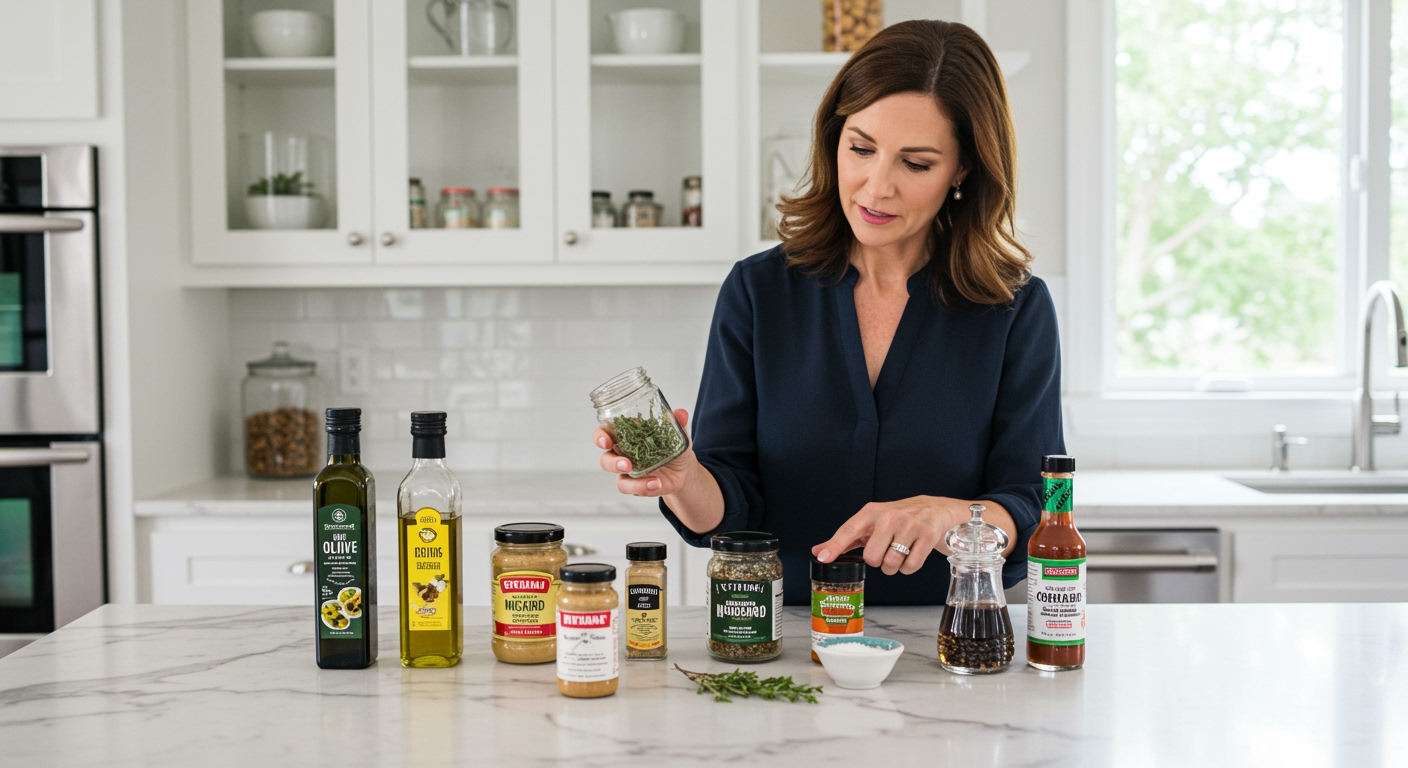✪ Key Takeaway: Cauliflower contains potassium and antioxidants that help lower blood pressure naturally when eaten regularly.
Introduction
Your doctor just told you that your blood pressure numbers are creeping up again.
You might be wondering if there are simple foods you can add to your daily meals that actually make a difference without relying solely on medications.
Hi, I’m Abdur, your nutrition coach and today I’m going to explain how cauliflower can become your natural ally in the fight against high blood pressure.
What Makes Cauliflower Special for Blood Pressure?
Cauliflower belongs to the cruciferous vegetable family, which includes broccoli, cabbage, and kale.
These vegetables contain unique compounds called glucosinolates that break down into powerful substances when you chew them.
One cup of cauliflower provides about 320 milligrams of potassium, which is essential for healthy blood pressure regulation.
Potassium works by helping your kidneys remove excess sodium from your bloodstream through urine.
When sodium levels drop, your blood vessels can relax and your heart doesn’t have to work as hard to pump blood.
Research shows that people who eat more potassium-rich foods like cauliflower tend to have lower blood pressure readings over time.
✪ Fact: One cup of cauliflower contains more potassium than a medium banana.
How Do Antioxidants in Cauliflower Help Your Heart?
Cauliflower is packed with vitamin C, providing about 77% of your daily needs in just one cup.
Vitamin C acts as a powerful antioxidant that protects your blood vessels from damage caused by free radicals.
When your blood vessels are healthy and flexible, blood flows more easily and your blood pressure stays in a normal range.
The vegetable also contains choline, a nutrient that supports proper nerve function and helps regulate your heartbeat.
Studies indicate that people with higher choline intake have better cardiovascular health markers including lower blood pressure.
The combination of these antioxidants creates a protective effect that keeps your cardiovascular system functioning optimally.
✪ Pro Tip: Steam cauliflower for 5-7 minutes to preserve maximum vitamin C content.
Does the Fiber Content Really Make a Difference?
One cup of cauliflower provides about 3 grams of dietary fiber, which might not sound like much but plays a crucial role in blood pressure management.
Fiber helps slow down the absorption of sodium from your digestive tract, preventing blood pressure spikes after meals.
This type of fiber also feeds beneficial bacteria in your gut, which produce short-chain fatty acids that have anti-inflammatory effects.
Chronic inflammation contributes to high blood pressure by making your blood vessels less flexible and more resistant to blood flow.
Research from major medical institutions shows that people who eat more fiber-rich vegetables have significantly lower rates of hypertension.
The fiber in cauliflower also helps you feel full longer, which can prevent overeating and support healthy weight management.
Maintaining a healthy weight reduces the strain on your cardiovascular system and naturally helps keep blood pressure in check.
✪ Note: Gradually increase fiber intake to avoid digestive discomfort.
What Does Recent Research Actually Show?
A comprehensive study published in 2024 examined the eating habits of over 18,000 adults and their blood pressure readings.
Participants who ate at least four servings of cruciferous vegetables weekly, including cauliflower, had measurably lower blood pressure than those who ate fewer servings.
The researchers found that people consuming regular amounts of these vegetables had systolic blood pressure readings that were 2.5 points lower on average.
While this might seem small, even modest reductions in blood pressure can significantly decrease your risk of heart disease and stroke.
Another study focused specifically on the compounds found in cauliflower and their effects on blood vessel function.
The results showed that regular consumption improved endothelial function, which is how well your blood vessels can expand and contract.
✪ Fact: A 2-point drop in systolic pressure can reduce stroke risk by 10%.
How Should You Add Cauliflower to Your Daily Routine?
The most effective approach is to include half a cup to one cup of cauliflower in your meals three to four times per week.
You can steam it as a side dish, add it to soups, or even use it as a rice substitute by pulsing it in a food processor.
Roasting cauliflower with a small amount of olive oil and herbs creates a delicious dish that retains most of its blood pressure benefits.
Avoid boiling cauliflower for extended periods as this can reduce its vitamin C content by up to 50%.
For maximum benefit, pair cauliflower with other heart-healthy foods like leafy greens, lean proteins, and whole grains.
Remember that no single food is a magic bullet, but cauliflower can be a valuable part of an overall healthy eating pattern that supports normal blood pressure.
✪ Pro Tip: Buy frozen cauliflower when fresh isn’t available – it retains similar nutritional value.
The Bottom Line
Cauliflower can indeed help lower blood pressure naturally through its potassium content, antioxidants, and fiber.
Small changes in your daily food choices can create meaningful improvements in your long-term health outcomes.
I would love to hear about your experience with adding more vegetables like cauliflower to your meals, so please share your thoughts or questions in the comments below.
References
At NutritionCrown, we use quality and credible sources to ensure our content is accurate and trustworthy. Below are the sources referenced in creating this article:
- Medical News Today: 4 daily servings cruciferous vegetables broccoli kale may help lower blood pressure
- PMC: Cruciferous Vegetables and Cardiovascular Health
- PMC: Dietary Patterns and Blood Pressure
- British Heart Foundation: Cruciferous vegetables heart health benefits





